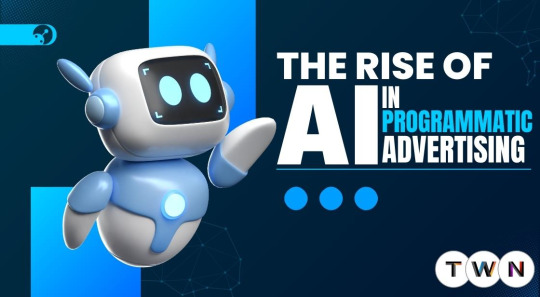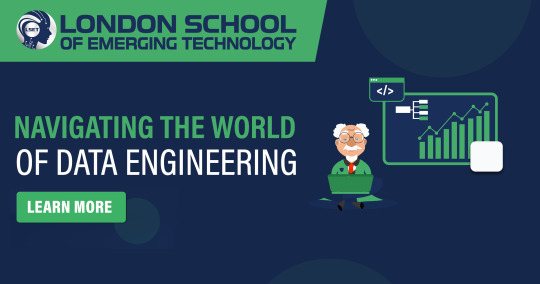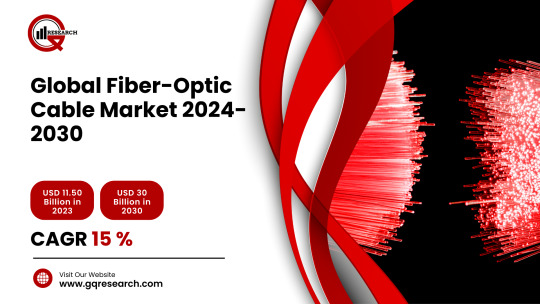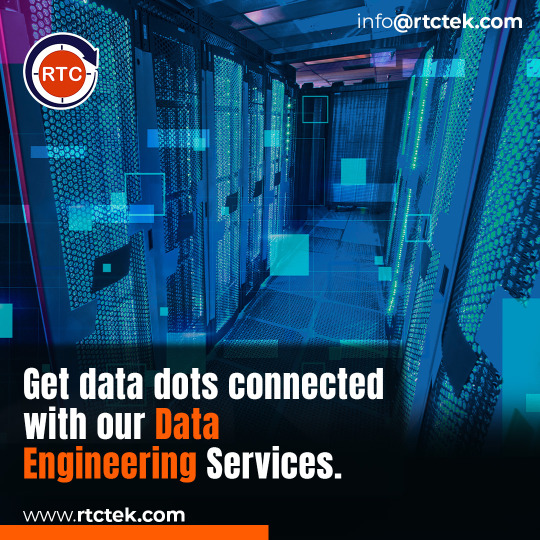#datainfrastructure
Explore tagged Tumblr posts
Text
#GreenDataCenters#Sustainability#RenewableEnergy#DataInfrastructure#SmartCooling#EnergyEfficiency#DigitalTransformation#ClimateAction#Timestech#TechInnovation#NetZero#electronicsnews#technologynews
0 notes
Text
Designing for Scale: Data Modeling in Big Data Environments
In today's data-driven world, businesses generate and consume vast amounts of data at an unprecedented pace. This surge in data necessitates new approaches to data modeling, particularly when dealing with big data environments. Traditional data modeling techniques, while proven and reliable for smaller datasets, often fall short when applied to the scale and complexity of modern data systems. This blog explores the differences between traditional and big data modeling, delves into various modeling techniques, and provides guidance on designing for scale in big data environments.
Difference Between Traditional and Big Data Modeling
Traditional data modeling typically involves creating detailed schemas upfront, focusing on normalization to minimize redundancy and ensure data integrity. These models are designed for structured data stored in relational databases, where consistency and transaction management are paramount.
In contrast, big data modeling must accommodate the three V's of big data: volume, velocity, and variety. This requires models that can handle large quantities of diverse data types, often arriving at high speeds. Flexibility and scalability are key, as big data systems need to process and analyze data quickly, often in real-time.
Dimensional Modeling: Star and Snowflake Schemas
Dimensional modeling is a technique used to design data warehouses, focusing on optimizing query performance. Two popular schemas are the star schema and the snowflake schema:
Star Schema: This is the simplest form of dimensional modeling. It consists of a central fact table connected to multiple dimension tables. Each dimension table contains attributes related to the fact table, making it easy to query and understand. The star schema is favored for its simplicity and performance benefits.
Snowflake Schema: This is a more complex version of the star schema, where dimension tables are normalized into multiple related tables. While this reduces redundancy, it can complicate queries and impact performance. The snowflake schema is best suited for environments where storage efficiency is more critical than query speed.

Star and Snowflake Schemas
NoSQL vs Relational Modeling Considerations
NoSQL databases have emerged as a powerful alternative to traditional relational databases, offering greater flexibility and scalability. Here are some key considerations:
Schema Flexibility: NoSQL databases often use a schema-less or dynamic schema model, allowing for greater flexibility in handling unstructured or semi-structured data. This contrasts with the rigid schemas of relational databases.
Scalability: NoSQL systems are designed to scale horizontally, making them ideal for large-scale applications. Relational databases typically scale vertically, which can be more expensive and less efficient at scale.
Consistency vs Availability: NoSQL databases often prioritize availability over consistency, adhering to the CAP theorem. This trade-off can be crucial for applications that require high availability and partition tolerance.
Denormalization Strategies for Distributed Systems
Denormalization is a strategy used to improve read performance by duplicating data across multiple tables or documents. In distributed systems, denormalization helps reduce the number of joins and complex queries, which can be costly in terms of performance:
Precomputed Views: Storing precomputed or materialized views can speed up query responses by eliminating the need for real-time calculations.
Data Duplication: By duplicating data in multiple places, systems can serve read requests faster, reducing latency and improving user experience.
Trade-offs: While denormalization improves read performance, it can increase storage costs and complicate data management, requiring careful consideration of trade-offs.

Denormalization Strategies
Schema-on-Read vs Schema-on-Write
Schema-on-read and schema-on-write are two approaches to data processing in big data environments:
Schema-on-Read: This approach defers the schema definition until data is read, allowing for greater flexibility in handling diverse data types. Tools like Apache Hive and Google BigQuery support schema-on-read, enabling ad-hoc analysis and exploration of large datasets.
Schema-on-Write: In this approach, the schema is defined before data is written, ensuring data integrity and consistency. Traditional relational databases and data warehouses typically use schema-on-write, which is suitable for well-structured data with known patterns.
FAQs
What is the main advantage of using NoSQL databases for big data modeling?
NoSQL databases offer greater scalability and flexibility, making them ideal for handling large volumes of unstructured or semi-structured data.
How does denormalization improve performance in distributed systems?
Denormalization reduces the need for complex joins and queries, speeding up read operations and improving overall system performance.
What is the key difference between schema-on-read and schema-on-write?
Schema-on-read allows schema definition at the time of data retrieval, offering flexibility, while schema-on-write requires schema definition before data is stored, ensuring consistency.
Why might a business choose a snowflake schema over a star schema?
A snowflake schema offers better storage efficiency through normalization, which is beneficial when storage costs are a primary concern.
Can dimensional modeling be used in NoSQL databases?
Yes, dimensional modeling concepts can be adapted for use in NoSQL databases, particularly for analytical purposes, though implementation details may differ.
Home
instagram
#DataModeling#DatabaseDesign#BigDataArchitecture#StarSchema#SnowflakeSchema#NoSQLDesign#DataEngineering#SchemaDesign#SunshineDigitalServices#DataInfrastructure#Instagram
0 notes
Text
Fixing the Foundations: How to Choose the Right Data Engineering Service Provider to Scale with Confidence
Introduction
What do failed AI pilots, delayed product launches, and sky-high cloud costs have in common? More often than not, they point to one overlooked culprit: broken or underdeveloped data infrastructure.
You’ve likely invested in analytics, maybe even deployed machine learning. But if your pipelines are brittle, your data governance is an afterthought, and your teams are drowning in manual ETL — scaling is a fantasy. That’s where data engineering service providers come in. Not just to patch things up, but to re-architect your foundation for growth.
This post isn’t a checklist of "top 10 vendors." It’s a practical playbook on how to evaluate, engage, and extract value from data engineering service providers — written for those who’ve seen what happens when things go sideways. We’ll tackle:
Key red flags and hidden risks in typical vendor engagements
Strategic decisions that differentiate a good provider from a transformative one
Actionable steps to assess capabilities across infrastructure, governance, and delivery
Real-world examples of scalable solutions and common pitfalls
By the end, you’ll have a smarter strategy to choose a data engineering partner that scales with your business, not against it.
1. The Invisible Problem: When Data Engineering Fails Quietly
📌 Most executives don't realize they have a data engineering problem until it's too late. AI initiatives underperform. Dashboards take weeks to update. Engineering teams spend 60% of their time fixing bad data.
Here’s what failure often looks like:
✅ Your cloud bills spike with no clear reason.
✅ BI tools surface outdated or incomplete data.
✅ Product teams can't launch features because backend data is unreliable.
These issues may seem scattered but usually trace back to brittle or siloed data engineering foundations.
What You Need from a Data Engineering Service Provider:
Expertise in building resilient, modular pipelines (not just lifting-and-shifting existing workflows)
A data reliability strategy that includes observability, lineage tracking, and automated testing
Experience working cross-functionally with data science, DevOps, and product teams
Example: A fintech startup we worked with saw a 40% drop in fraud detection accuracy after scaling. Root cause? Pipeline latency had increased due to a poorly designed batch ingestion system. A robust data engineering partner re-architected it with stream-first design, reducing lag by 80%.
Takeaway: Treat your pipelines like production software — and find partners who think the same way.
2. Beyond ETL: What Great Data Engineering Providers Actually Deliver
Not all data engineering service providers are built the same. Some will happily take on ETL tickets. The best? They ask why you need them in the first place.
Look for Providers Who Can Help You With:
✅ Designing scalable data lakes and lakehouses
✅ Implementing data governance frameworks (metadata, lineage, cataloging)
✅ Optimizing storage costs through intelligent partitioning and compression
✅ Enabling real-time processing and streaming architectures
✅ Creating developer-friendly infrastructure-as-code setups
The Diagnostic Test: Ask them how they would implement schema evolution or CDC (Change Data Capture) in your environment. Their answer will tell you whether they’re architects or just implementers.
Action Step: During scoping calls, present them with a real use case — like migrating a monolithic warehouse to a modular Lakehouse. Evaluate how they ask questions, identify risks, and propose a roadmap.
Real-World Scenario: An e-commerce client struggling with peak load queries discovered that their provider lacked experience with distributed compute. Switching to a team skilled in Snowflake workload optimization helped them reduce latency during Black Friday by 60%.
Takeaway: The right provider helps you design and own your data foundation. Don’t just outsource tasks — outsource outcomes.
3. Common Pitfalls to Avoid When Hiring Data Engineering Providers
Even experienced data leaders make costly mistakes when engaging with providers. Here are the top traps:
❌ Vendor Lock-In: Watch for custom tools and opaque frameworks that tie you into their team.
❌ Low-Ball Proposals: Be wary of providers who bid low but omit governance, testing, or monitoring.
❌ Overemphasis on Tools: Flashy slides about Airflow or dbt mean nothing if they can’t operationalize them for your needs.
❌ Siloed Delivery: If they don’t involve your internal team, knowledge transfer will suffer post-engagement.
Fix It With These Steps:
Insist on open standards and cloud-native tooling (e.g., Apache Iceberg, Terraform, dbt)
Request a roadmap for documentation and enablement
Evaluate their approach to CI/CD for data (do they automate testing and deployment?)
Ask about SLAs and how they define “done” for a data project
Checklist to Use During Procurement:
Do they have case studies with measurable outcomes?
Are they comfortable with hybrid cloud and multi-region setups?
Can they provide an observability strategy (e.g., using Monte Carlo, OpenLineage)?
Takeaway: The right provider makes your team better — not more dependent.
4. Key Qualities That Set Top-Tier Data Engineering Service Providers Apart
Beyond technical skills, high-performing providers offer strategic and operational value:
✅ Business Context Fluency: They ask about KPIs, not just schemas.
✅ Cross-Functional Alignment: They involve product owners, compliance leads, and dev teams.
✅ Iterative Delivery: They build in small releases, not 6-month monoliths.
✅ Outcome Ownership: They sign up for business results, not just deliverables.
Diagnostic Example: Ask: “How would you approach improving our data freshness SLA from 2 hours to 30 minutes?” Listen for depth of response across ingestion, scheduling, error handling, and metrics.
Real Use Case: A healthtech firm needed HIPAA-compliant pipelines. A qualified data engineering partner built an auditable, lineage-rich architecture using Databricks, Delta Lake, and Unity Catalog — while training the in-house team in parallel.
Takeaway: Great providers aren’t just engineers. They’re enablers of business agility.
5. Building a Long-Term Engagement That Grows With You
You’re not just hiring for today’s needs. You’re laying the foundation for:
✅ Future ML use cases
✅ Regulatory shifts
✅ New product data requirements
Here’s how to future-proof your partnership:
Structure the engagement around clear phases: Discovery → MVP → Optimization → Handoff
Build in regular architecture reviews (monthly or quarterly)
Set mutual KPIs (e.g., data latency, SLA adherence, team velocity improvements)
Include upskilling workshops for your internal team
Vendor Models That Work:
Pod-based teams embedded with your org
Outcome-based pricing for projects (vs. hourly billing)
SLA-backed support with defined escalation paths
Takeaway: Don’t look for a vendor. Look for a long-term capability builder.
Conclusion
Choosing the right data engineering service provider is not about ticking boxes. It’s about finding a strategic partner who can help you scale faster, move smarter, and reduce risk across your data stack.
From reducing latency in critical pipelines to building governance into the foundation, the right provider becomes a multiplier for your business outcomes — not just a toolsmith.
✅ Start by auditing your current bottlenecks.
✅ Map your needs not to tools, but to business outcomes.
✅ Interview providers with real-world scenarios, not RFIs.
✅ Insist on open architectures, ownership transfer, and iterative value delivery.
Next Step: Start a 1:1 discovery session with your potential provider — not to discuss tools, but to outline your strategic priorities.
And remember: Great data engineering doesn’t shout. But it silently powers everything your business depends on.
#DataEngineering#DataInfrastructure#DataOps#ModernDataStack#ETL#DataPipeline#BigDataSolutions#AIReadyData#CloudDataEngineering#DataGovernance#ScalableData#TechStrategy#DataInnovation#MachineLearningOps#AnalyticsEngineering#DataEngineeringServiceProviders#EnterpriseData#BusinessDataSolutions#DataTransformation#DataArchitecture#DataStrategy#DataDriven#DataQuality#CloudArchitecture#DataPlatform#AdvancedAnalytics#DataIntegration#DataOptimization#SmartData#RealTimeData
0 notes
Text
𝐓𝐡𝐞 𝐔𝐥𝐭𝐢𝐦𝐚𝐭𝐞 𝐃𝐚𝐭𝐚 𝐏𝐥𝐚𝐲𝐛𝐨𝐨𝐤 𝐢𝐧 2025 (𝐖𝐡𝐚𝐭'𝐬 𝐈𝐧, 𝐖𝐡𝐚𝐭'𝐬 𝐎𝐮𝐭)
The modern data stack is evolving—fast. In this video, we’ll break down the essential tools, trends, and architectures defining data in 2025. From Snowflake vs Databricks to ELT 2.0, metadata layers, and real-time infra—this is your executive cheat sheet.
Whether you're building a data platform, leading a team, or just staying ahead, this is the future-proof playbook.
Watch more https://youtu.be/EyTmxn4xHrU
#moderndatastack#datainfrastructure#dataengineering#dataanalytics#elt#datapipeline#dbt#snowflake#databricks#dagster#realdata#data2025#futureofdata#dataops#apacheiceberg#duckdb#vectordatabase#langchain#analyticsstack#dataarchitecture
0 notes
Text
With the growing demand for cloud-native solutions, Teradata to BigQuery migration is becoming a popular choice for organizations seeking scalable and cost-efficient data platforms. BigQuery’s serverless architecture and real-time analytics capabilities make it an ideal solution for modern data analytics needs.
By migrating from traditional on-premises systems like Teradata or Netezza, businesses can reduce infrastructure costs, scale automatically with data growth, and leverage BigQuery's advanced querying features for faster insights. Unlike legacy systems that require significant investments in physical hardware, BigQuery operates on a flexible pay-per-use pricing model, offering significant cost savings and operational efficiency.
The migration process from Teradata to BigQuery involves careful planning, data transformation, and ensuring compatibility with BigQuery’s cloud architecture. For businesses transitioning from Netezza to BigQuery migration, similar steps apply, ensuring a smooth transition to a more agile, cloud-based solution.
Overall, BigQuery’s integration with Google Cloud services, its scalability, and cost-effectiveness make it a powerful tool for businesses looking to modernize their data infrastructure. Moving to BigQuery enables real-time analytics and enhances decision-making, helping companies stay competitive in a data-driven world.
#TeradataToBigQuery#CloudMigration#BigQuery#DataAnalytics#DataMigration#CloudDataSolutions#NetezzaToBigQuery#RealTimeAnalytics#DataInfrastructure#GoogleCloud#BigData#DataTransformation
0 notes
Text
How Structured Cabling Can Improve Your Business Operations
A strong network infrastructure is essential for seamless business operations. Structured cabling provides an organized, scalable, and reliable solution for efficient data transmission and communication. Unlike outdated wiring, it minimizes downtime, simplifies maintenance, and supports future growth.
Key Benefits of Structured Cabling
✅ Reliable & Fast Connectivity – Ensures smooth data transfer with minimal disruptions. ✅ Reduced Downtime & Maintenance Costs – Prevents frequent network failures and costly repairs. ✅ Scalability – Easily expand your network as your business grows. ✅ Simplified Management – Organized cabling makes troubleshooting and upgrades effortless. ✅ Enhanced Security & Compliance – Reduces risks like data breaches and signal interference. ✅ Cost-Effective – Saves money in the long run with improved efficiency and lower repair costs.
Why Work with Expert Cabling Installers?
Professional cabling installers ensure proper network cabling installation, delivering a future-proof system tailored to your business needs. Whether upgrading or setting up a new network, structured cabling provides a stable and high-performing infrastructure.
Ready to enhance your business network? Invest in structured cabling today!

#StructuredCabling#NetworkCabling#CablingInstallers#BusinessNetwork#TechSolutions#OfficeNetworking#ConnectivityMatters#CablingInstallation#DataInfrastructure#SmartNetworking#FutureProofing#TechUpgrade#SeamlessConnectivity#NetworkEfficiency#ITSolutions#home & lifestyle#network installation companies
0 notes
Text
https://ifi.tech/industry/datacenter-migration-for-hirandani-financial-services/
Datacenter Migration Challenge & Solution For HFS | IFI Techsolutions A prominent financial solutions provider in India migrated 10+ on-premises servers to Azure with minimal downtime, enhancing security, performance, and business continuity. The project involved detailed planning, seamless coordination, and 24/7 support for optimal results.
0 notes
Text
The Rise of AI in Programmatic Advertising

Artificial Intelligence (AI) is reshaping the landscape of digital advertising, and programmatic advertising is no exception. Once seen as a futuristic concept, AI has quickly become an integral component of today’s advertising strategies.
Its transformative capabilities, including enhanced targeting accuracy, cost efficiency, dynamic creative optimization, and predictive analytics, are revolutionizing the way ads are bought, sold, and displayed.
As AI continues to advance, it is crucial to understand its current role in programmatic advertising. Is it merely a transient trend, or has it established itself as an indispensable technology?
This blog delves into AI’s significant impact on programmatic advertising, exploring how it enhances targeting precision, streamlines processes, and drives better outcomes.
We'll also address concerns about job displacement, emphasize the necessity of AI adoption, and discuss the imperative for businesses to stay ahead of AI’s evolving capabilities.
In a market where staying competitive is more challenging than ever, AI is no longer a concept for the future—it is the present reality.
AI’s Role in Programmatic Advertising: Temporary Trend or Permanent Shift?
Artificial intelligence is transforming the landscape of digital advertising, including programmatic advertising. Most marketers are either already utilizing AI-driven tools in their programmatic strategies or are planning to do so soon, with only 5% having no such intentions.
AI's capabilities—such as advanced personalization, optimized bidding, and predictive analytics—are set to play a crucial role in the cookieless future, making it a game-changer in the industry. As the programmatic sector continues to evolve with emerging trends, the question remains: is AI merely a passing trend, or is it an essential technology?
What is Programmatic Advertising?
Programmatic advertising is the automated buying and selling of digital ad inventory. It's a process that uses software and algorithms to purchase ad space across various digital platforms, such as websites, apps, and social media, in real-time.
How Does Programmatic Advertising Work?
Advertisers define their target audience: Advertisers specify the type of audience they want to reach based on demographics, interests, and behaviors.
Real-time bidding (RTB): Advertisers bid on ad inventory in real-time auctions. The highest bidder wins the ad placement.
Ad delivery: The winning ad is instantly displayed to the target audience.
Read More
0 notes
Text
Allshares Forges Ahead As European Compensation Software Leader With Novare Pay Acquisition

Bregal Milestone, a well-known private equity firm specializing in technology and software in Europe, has recently acquired Novare Pay, a highly successful compensation services provider based in Stockholm. As a result of this acquisition, Bregal Milestone has appointed Michael Ingelög as the Chair of the Allshares Board, further strengthening their position in the market.
Novare Pay is renowned for its impressive growth and profitability in the European compensation services sector, with a strong focus on the Nordic region. By joining forces with Allshares, Novare Pay will contribute to the expansion of their digital turnkey offering, benefiting their extensive client base of over 630 organizations across more than 40 countries. This strategic move solidifies Allshares' position as one of the leading providers of compensation software and services in Europe, with enhanced capabilities in areas such as compensation data analysis, incentives, and governance. Following the acquisition, Novare Pay will undergo a rebranding process and operate under the Allshares name.
Erika Andersson, the CEO of Novare Pay, expressed enthusiasm about the acquisition, emphasizing the potential to improve service delivery through the implementation of advanced compensation software and drive transformative change in the European compensation landscape. Cyrus Shey, Co-Founder and Managing Partner at Bregal Milestone, warmly welcomed Novare Pay to the Allshares family, recognizing the partnership's ability to foster growth and deliver cutting-edge compensation solutions across Europe. The appointment of Michael Ingelög as the Chair of the Allshares Board further strengthens the leadership team, as he brings extensive experience as a CEO and board executive.
Bregal Milestone is a prominent private equity firm in Europe, specializing in providing growth capital and operational support to develop leading technology companies. Allshares, on the other hand, is a market leader in equity plan design and administration in the Nordic region, serving a diverse range of multinational public and private enterprise customers in over 100 countries. Novare Pay, with its expertise in remuneration services for multinational organizations, serves a substantial client base of over 900 companies across more than 60 countries.
Read More - https://www.techdogs.com/tech-news/business-wire/allshares-forges-ahead-as-european-compensation-software-leader-with-novare-pay-acquisition
0 notes
Text
Navigating the World of Data Engineering

Navigating the World of Data Engineering. An Overview of Data Infrastructure! Dive into the dynamic field of data engineering to learn the fundamental ideas and strategies for developing strong data systems. LSET's thorough handbook delves into data modelling, processing, and pipeline creation, providing a road map for creating scalable and efficient data infrastructure. In addition, the London School of Emerging Technology (LSET) Data Engineer Course will provide expert-led training and hands-on experience in mastering data engineering tools and processes. Join on a path to becoming a skilled data engineer, prepared to face difficult data issues and drive digital innovation.
Enrol @ https://lset.uk/ for admission.
0 notes
Text
Fiber-Optic Cable Market to See Sustainable Growth Ahead | GQ Research
The Fiber-Optic Cable market is set to witness remarkable growth, as indicated by recent market analysis conducted by GQ Research. In 2023, the global Fiber-Optic Cable market showcased a significant presence, boasting a valuation of US$ 11.50 Billion. This underscores the substantial demand for Fiber-Optic Cable technology and its widespread adoption across various industries.
Get Sample of this Report at: https://gqresearch.com/request-sample/global-fiber-optic-cable-market/

Projected Growth: Projections suggest that the Fiber-Optic Cable market will continue its upward trajectory, with a projected value of US$ 30 Billion by 2030. This growth is expected to be driven by technological advancements, increasing consumer demand, and expanding application areas.
Compound Annual Growth Rate (CAGR): The forecast period anticipates a Compound Annual Growth Rate (CAGR) of 15 %, reflecting a steady and robust growth rate for the Fiber-Optic Cable market over the coming years.
Technology Adoption: In the Fiber-Optic Cable market, advancements in technology are rapidly transforming the landscape of telecommunications and networking. From improved fiber-optic materials to enhanced manufacturing processes, technology adoption is driving the development of high-speed, high-capacity fiber-optic solutions that meet the growing demands of modern connectivity.
Application Diversity: The Fiber-Optic Cable market boasts a wide range of applications across various industries. From telecommunications and internet infrastructure to data centers, healthcare, and aerospace, fiber-optic cables play a vital role in enabling high-speed data transmission, video streaming, telecommunication services, and more, showcasing their versatility and adaptability to diverse needs.
Consumer Preferences: Consumer preferences in the Fiber-Optic Cable market are shaped by the demand for reliable, high-speed connectivity solutions. End-users prioritize fiber-optic cables that offer low latency, high bandwidth, and robust performance, enabling seamless communication, streaming, and data transfer. Additionally, there is a growing preference for eco-friendly and energy-efficient fiber-optic solutions that align with sustainability goals.
Technological Advancements: Continuous technological advancements drive innovation in the Fiber-Optic Cable market. From the development of next-generation fiber-optic materials to advancements in cable design, connectivity solutions, and network infrastructure, technological advancements are enhancing the speed, reliability, and efficiency of fiber-optic communication systems, enabling faster data transmission and greater network capacity.
Market Competition: Intense competition among fiber-optic cable manufacturers and service providers fuels innovation and drives product development in the Fiber-Optic Cable market. Companies differentiate themselves through technology leadership, product reliability, pricing strategies, and customer service, leading to a dynamic and competitive market environment characterized by rapid innovation and continuous improvement.
Environmental Considerations: Environmental sustainability is becoming increasingly important in the Fiber-Optic Cable market. Manufacturers are focusing on developing eco-friendly fiber-optic materials, reducing energy consumption in cable production, and implementing recycling programs to minimize environmental impact. Additionally, the use of fiber-optic cables for energy-efficient communication and networking solutions contributes to reducing carbon emissions and supporting green initiatives.
Regional Dynamics: Different regions may exhibit varying growth rates and adoption patterns influenced by factors such as consumer preferences, technological infrastructure and regulatory frameworks.
Key players in the industry include:
Yangtze Optical Fiber & Cable.
AFC Cable Systems
Optical Cable Corporation
Furukawa Electric Co. Ltd
Sumitomo Electric Industries Ltd
Fujikura Ltd
Corning Inc
Prysmian Group
Hitachi Cable Ltd
Sterlite technologies Ltd
The research report provides a comprehensive analysis of the Fiber-Optic Cable market, offering insights into current trends, market dynamics and future prospects. It explores key factors driving growth, challenges faced by the industry, and potential opportunities for market players.
For more information and to access a complimentary sample report, visit Link to Sample Report: https://gqresearch.com/request-sample/global-fiber-optic-cable-market/
About GQ Research:
GQ Research is a company that is creating cutting edge, futuristic and informative reports in many different areas. Some of the most common areas where we generate reports are industry reports, country reports, company reports and everything in between.
Contact:
Jessica Joyal
+1 (614) 602 2897 | +919284395731
Website - https://gqresearch.com/
0 notes
Text
0 notes
Text

Let us be your bridge for a seamless data journey. Our Data Engineering Services connect the dots to unlock actionable insights for your business. Learn more about our services at https://rtctek.com/data-engineering-services/.
#dataengineering#bigdata#datapipeline#dataintegration#etl#dataprocessing#dataarchitecture#datawarehousing#dataops#dataquality#dataanalytics#datascience#datamanagement#datainfrastructure#database#datatechnology
1 note
·
View note
Text
Custom Database Consulting Services | Cloud Database Solutions
#DatabaseConsulting#DataManagement#DatabaseOptimization#DataInfrastructure#DatabaseSolutions#DataArchitecture#DataPerformance#DatabaseExperts
1 note
·
View note
Text
With the growing demand for cloud-native solutions, Teradata to BigQuery migration is becoming a popular choice for organizations seeking scalable and cost-efficient data platforms. BigQuery’s serverless architecture and real-time analytics capabilities make it an ideal solution for modern data analytics needs.
By migrating from traditional on-premises systems like Teradata or Netezza, businesses can reduce infrastructure costs, scale automatically with data growth, and leverage BigQuery's advanced querying features for faster insights. Unlike legacy systems that require significant investments in physical hardware, BigQuery operates on a flexible pay-per-use pricing model, offering significant cost savings and operational efficiency.
The migration process from Teradata to BigQuery involves careful planning, data transformation, and ensuring compatibility with BigQuery’s cloud architecture. For businesses transitioning from Netezza to BigQuery migration, similar steps apply, ensuring a smooth transition to a more agile, cloud-based solution.
Overall, BigQuery’s integration with Google Cloud services, its scalability, and cost-effectiveness make it a powerful tool for businesses looking to modernize their data infrastructure. Moving to BigQuery enables real-time analytics and enhances decision-making, helping companies stay competitive in a data-driven world.
Learn more about the benefits of migrating from Teradata to BigQuery and how it can transform your data operations.
#TeradataToBigQuery#CloudMigration#BigQuery#DataAnalytics#DataMigration#CloudDataSolutions#NetezzaToBigQuery#RealTimeAnalytics#DataInfrastructure#GoogleCloud#BigData#DataTransformation
0 notes
Text
🌟📚 Big Data Essentials: What You Need to Know!
🚀 New Blog Alert from Analytics Jobs!
Navigating the Big Data Ecosystem can feel overwhelming — but it doesn't have to be.
In our latest blog, we break down the foundational components of the Big Data environment: from infrastructure and analytics to real-world applications across industries like healthcare, retail, and energy. Whether you're just stepping into the world of data or looking to strengthen your understanding of core technologies like Hadoop, NoSQL, BI platforms, and machine learning, this is your go-to guide.
🔍 Get a clear, simplified overview of the ecosystem that powers data-driven innovation.
🧠 Start reading: Understanding Big Data: The Ecosystem
#BigData #DataAnalytics #DataScience #AnalyticsJobs #MachineLearning #BusinessIntelligence #TechBlog #DataInfrastructure #Hadoop #NoSQL

0 notes